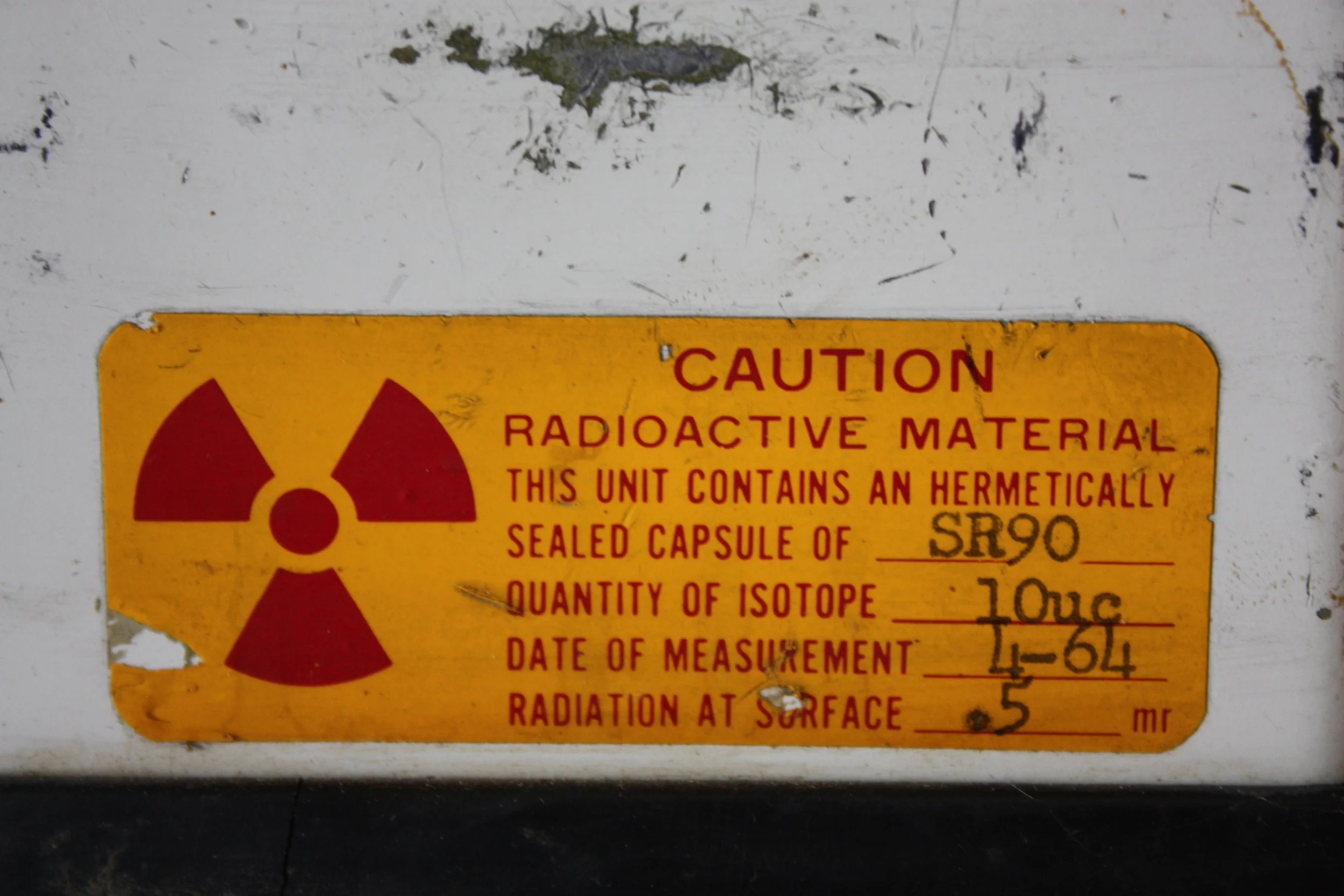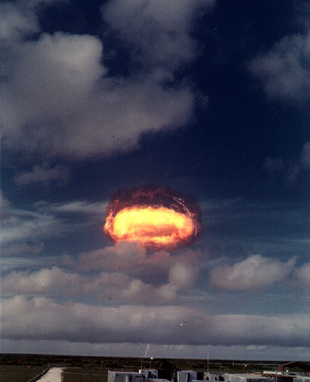The world was forever changed on July 16, 1945. On this day, scientists in the desert of New Mexico unleashed the nuclear genie out of a bottle. For all the advancements in technology that have resulted from understanding the fundamental constituents of matter, this was the unintended consequence. Throughout the nearly 5 decade long conflict of the Cold War, the world lived under the shadow of the bomb. During this period over 2,000 nuclear devices were tested in the atmosphere, oceans, underground, and in outer space, the Russian test of the "Tsar Bomba" producing a yield in excess of 50 Megatons.
The collapse of the Soviet Union and the end of the Cold War in the last decade of the twentieth century brought the world's nuclear forces back from the brink, but also brought about a new risk. Nuclear and radiological materials loose and unsecured from a multitude of military, industrial, and scientific facilities. In the twenty first century, this is one of our grand challenges: preventing non-state actors from acquiring and using these materials, a problem in some ways worse than the umbrella of strategic nuclear forces during the Cold War, from groups that don't act under a framework of deterrents, nuclear or conventional. Thankfully, over the last two decades entities around the world have worked to not only secure the world's stockpile of these materials, but to eliminate them and the uses of these materials in nonmilitary applications.
Treaties like the Nuclear Nonproliferation Treaty (NPT), have provided a framework of accountability for states that hold these materials. There are many aspects of nonproliferation efforts, but the technological ones are where I have focused some of efforts. I knew early on that I wanted to in some way contribute to nuclear security and work towards a day that we have safely contained that nuclear genie released nearly 70 years ago.
Detection of Nuclear and Radiological materials
Nuclear and radiological materials, while dangerous, are far easier to detect and interdict than other trafficked materials like chemical agents and explosives, owning to their unstable nuclear configuration. Radiological materials, like high activity Cesium-137 sources are easy to detect with most radiation detectors including many forms of low-cost scintillation detectors. One area that we've seen significant progress is in eliminating the applications requiring the vast distribution of these long-lived, high activity sources, replacing radioactive sources in technology like blood irradiators and neutron sources with electronic radiation sources that turn off after use.
Nuclear material, specifically Highly Enriched Uranium (HEU) and Weapons Grade Plutonium (WGPu), are generally harder to detect. The primary penetrating radiation released from HEU (Uranium-235) are gamma photons at 185 KeV, WGPu also emits photons at similar energies, along with fast neutrons from Spontaneous Fission. These neutrons, while exceptionally hard to shield, are not easily detected by most detectors due to their neutral nature. Each of these materials has its own set of challenges, not only in interdicting, but in the threat posed. WGPu is somewhat easier to produce in large quantities, and forms the core of most of the global weapons fissile material stockpiles, but is harder to fashion into a weapon. HEU, while in many cases more difficult to produce and acquire, is relatively easy to weaponize.
Cherenkov Detectors
The vivid deep blue glow of Cherenkov light is one of the more recognizable symbols of nuclear energy, and it's production is just as fascinating.
Cherenkov radiation is produced in a process somewhat analogous to the sonic boom produced when an object exceeds the speed of sound. The foundation of Albert Einstein's work in theoretical physics is a cosmic speed limit of c, the speed of light in a vacuum. This is as best we can tell an unbreakable limit, and an important constant in our physical understanding of the universe. In a transparent material like air, glass, or water, however, light propagates at a significantly slower speed (as determined by that materials refractive index: the speed of light in a vacuum over the speed of light in that material, c/v).
We can see this slowing down of photons everyday in processes like refraction in a glass of water and delayed global telecommunications of light signals traveling through a fiber. It also raises an interesting possibility: that relativistic particles traveling close to the speed of light could exceed the speed of light in a suitable dielectric. High energy electrons (like the Beta particles arising from nuclear processes described on this site) fit the bill perfectly. When they go screaming through a dielectric, a shockwave or cone of light propagates out from the traversing particle. The photo you see is spent high burn-up reactor fuel containing large quantities of energetic beta emitters and it exhibits this blue glow of Cherenkov radiation visible to the human eye.
This Cherenkov effect has been employed for many years in large detectors for particle physics and particle astrophysics experiments. These detectors have contributed to our knowledge of the standard model and the structure of our universe in experiments ranging from large neutrino telescopes buried deep underground to particle collider experiments like the Large Hadron Collider (LHC) at CERN in Geneva, Switzerland. Radiators made up of light water, heavy water (D2O), and even Aerogels record interactions of particles with matter and give information on their quantity and type. Photomultiplier Tubes (PMTs) are typically used to detect and amplify the Cherenkov light, turning it into an electrical signal that can give information on the detected particles.
Cherenkov Detectors certainly can detect exotic particles on this large scales. But what about a smaller scale? And what about detecting radiation important to questions of nuclear security? These are the questions I asked myself early in my career looking at technologies that could help interdict nuclear material. Specifically for portal monitoring applications where cargo containers and other packages needed to be rapidly checked for the presence of Special Nuclear Material. As described previously, Weapons Grade Plutonium emits a significant flux of Spontaneous Fission neutrons which are incredibly penetrating. The gold standard detection technology for neutrons in these applications are proportional detectors containing a rare gas, Helium-3. 3He, containing one less neutron than the far more common Helium-4, is exceedingly rare on earth. Its primary source is tritium stockpiles from the US and Russian nuclear programs where the Beta decay of Hydrogen-3 produces 3He with a half-life of 12.3 years. Efforts to deploy portal monitoring by the US Department of Homeland Security have caused a severe depletion in stockpiles of this rare isotope, and means that detectors containing Helium-3 are too expensive to deploy on the scale required for a comprehensive net against nuclear trafficking.
At right is the first prototype of a neutron detector based on Cherenkov effect. In these detectors I developed, neutrons are captured by a dopant that has a high neutron capture cross-section, in this case natural Gadolinium ions dissolved in normal light water. Neutrons enter the detector and are thermalized (slowed down) by scattering collisions with hydrogen atoms in the water. These thermal neutrons are then absorbed by the Gadolinium atoms and produce a cascade of high energy Gamma photons and resultant Compton Scattered electrons. This cascade produces light that is detected by PMTs and turned into a signal. The low cost of the raw materials in these detectors mean they can be deployed in much larger force than preexisting systems, and there is very little natural background or interfering sources of radiation compared to systems that use plastic scintillator.
Active Detection Methods
Under construction
Additional Reading
The Bomb: A New History
by Dr. Stephen M. Younger
The Making of the Atomic Bomb
by Richard Rhodes


